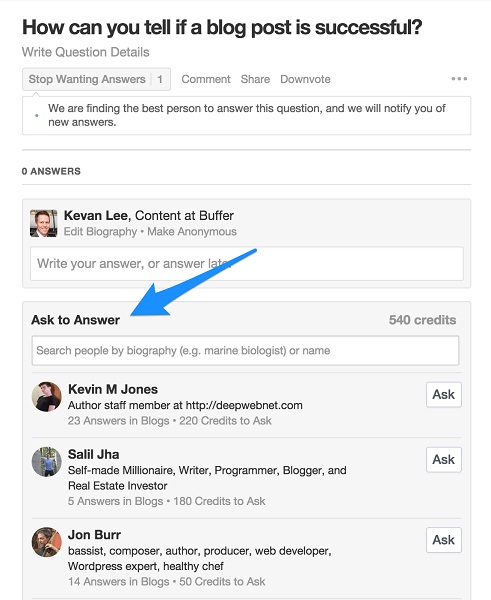If you keep up with the latest concepts in creating content, you might have recently come across the term “content ideation”—but it’s not always clear what exactly that is. A short definition is that it is the process of identifying which topics are relevant and would resonate with your target audience. Sounds easy, right? Behind every successful content piece should be a data-driven, audience-centered idea.
But once content creators have identified such topics, most fail to achieve their marketing goals in spite of executing great content ideas. They fail to appeal to their target audience and instead speak about how amazing their products and services are.
Start with your target audience
Effective content ideation starts and ends with your target audience’s interests and pain points, which must be taken into consideration so that any content you generate is engaging and useful.
Users tend to share great content with other people in their networks, which results in more brand awareness for your company. But engaging content serves an even higher purpose: It educates and entertains the user, which simplifies the decision-making process.
That’s where your commercial objectives come in. Great content helps you achieve your goals while solving the user’s problems.
Users are attracted, engaged and delighted by great content as shown in this flywheel.
- Attract: Users become prospects when they’re drawn in by your content.
- Engage: Prospects become customers when they find your content useful and engaging.
- Delight: Customers become promoters when they have a delightful experience with your brand.
This is commonly referred to as inbound marketing. It draws prospects into your space, rather than pushing your products and services onto them.
To improve customer experience and build trust, your content ideation process must consider your target audience’s buyer journey.
Make sure that the ideas you generate will result in different types of content that will help prospects along their path to purchase. Get clear about their needs and pain points and define how your products and services solve these problems. That’s the core of content ideation.
Before we delve into some of the tools you can use for this process, let’s explore the value of content ideation to a marketing strategy.
Why Is Content Ideation Important?
Content Ideation Enables You to Scale Your Marketing Strategy
Content ideation helps you to optimize your marketing efforts. One good content idea will allow you to create several different forms of content at the drop of a hat. For example, if you host a webinar, you can easily have the recording transcribed and produce blog posts, white papers and social content based on the findings from the presentation.
During content ideation, you can track your reader’s journey, identify which content performs best and generate more ideas around the same topic. You can map your audience’s data, consolidate your insights and optimize your content strategy.
By leveraging data, you can create high-quality, high-volume content at scale just like The Telegraph. It uses Parse.ly, a content analytics platform, to gather insights about its best performing content, then makes good content work harder without weighing down its journalists. Large screens in the newsroom give journalists an idea of which stories are rising and falling in real time, as well as including information about social shares, unique visitors and comparisons to previous weeks or days. Understanding its target audience and improving user experience has resulted in a growing number of loyal readers.
Content Ideation Helps You to Know Your Target Audience Better
During content ideation, you’ll gather data from website analytics, sales team feedback, social media listening and keyword research.
These tactics help you to identify and better understand your target audience and nurture them through the funnel. As a result, you can create content that provides more value to your target audience while fulfilling your marketing objectives.
Content Ideation Helps You Stay on Track and Collaborate Better
Low-quality content is often a result of ad hoc creation. When you plan ahead, you have more time to research and create engaging content. Churning out fresh material prevents content fatigue and keeps you up to date with your editorial calendar. Content ideation gives you a long-term vision that allows you to effectively allocate time and digital resources to your marketing strategy. It also helps your team work better together, since writers, designers and other stakeholders will have a clearer focus on which content will resonate with your audience.
Types of Content Ideas
The book Ideation: The Birth and Death of Ideas, shows you how you can generate, develop, fund and market your ideas.
Authors Douglas Graham and Thomas T Bachman identify 5 types of creative ideas that can be adopted by a content marketer:
Evolutionary Idea
Evolutionary content is a derivative of existing material. It saves you a ton of time because you don’t have to create content from scratch. Just take older content and rework it based on audience data and business needs. You can change the format so that you can add value to the content. For instance, you can create an infographic from a blog post.
“There is no such thing as a new idea … We simply take a lot of old ideas and put them into a sort of mental kaleidoscope.” – Mark Twain
Symbiotic Idea
When you combine two or more ideas, you’ll end up with symbiotic content. Great symbiotic ideas usually occur in teams where creative collaboration is encouraged. Symbiotic content provides more value to the audience since it explores more than one idea.
“No matter how brilliant your mind or strategy, if you’re playing a solo game, you’ll always lose out to a team.” – Reid Hoffman
Artistically Innovative Idea
These types of content emerge when you act on your artistic impulse. Artistic impulse can be described as the freedom that comes when you actively try to access your subconscious mind.
Ideas that are generated during this process are often inspired and driven by the search for truth. While we often think of painters and sculptors as artists, a writer who creates beautiful images and expresses truth is acting on the same artistic impulse. Artistically innovative content usually seeks to express creativity and connect with the audience at an emotional level.
“No force on earth can stop an idea whose time has come” – Victor Hugo
Revolutionary Idea
When you veer away from traditional ideas to generate fresh perspectives, you end up with revolutionary content. Like the word revolve, revolutionary ideas turn old and boring ideas completely around, breathing new life into dull and repetitive topics.
To harness the power of revolutionary ideas you need to be fearless. You must be brave and willing to try new content ideation techniques or subjects and wade into uncharted territory. Only with revolutionary ideas will you get outstanding results.
Remember that you’re never more than a brainstorming session away from your next great idea.
“If you want something new, you have to stop doing something old.” – Peter F. Drucker
Problem-Solution Idea
Problem-solution types of content focus on solving the audience’s problems. Content marketers create problem-solution content after defining their target audience and business goals.
“Content is the reason search began in the first place” – Lee Odden
Content Ideation Techniques
In your content marketing career, you’ll often suffer from writer’s block, but you can’t let that interfere with your creative process. You can prevent your content marketing from grinding to a halt with these ideation techniques.
Use Keyword Research
Keyword research during content ideation helps you to understand your audience’s search behavior. It improves your rankings and ensures that you get your content in front of audiences who are actively searching for it.
Use tools such as Answer the Public or KWFinder to find both long-tail and short-tail keywords. Your keyword search volumes will keep changing so you’ll have to keep an eye on your list and keep adjusting as time goes by.
Use Audience Research
Identify which audience would most benefit from your content. Whenever possible, network and engage with them. Follow them on social media, chime in when they’re having conversations on online groups and attend local industry events.
Take note of the topics that arise during these events and craft relevant content around them. Use social listening to research conversations that your audience is having on Twitter, Facebook, LinkedIn and other channels.
Hashtags and keywords will help you identify what your target audience is passionate about, so you can optimize your content for better results.
Check Your Competitor’s Content
Comb through your competitor sites to identify what content they’re ranking for. Identify areas of improvement and create content around that. Read through the comments to see how their audience is responding to the content.
These insights will give you ideas for both evolutionary and revolutionary content types.
Check Q&A Threads
Discussion forums such as Quora, Yahoo Answers and Stack Exchange can shed some light on what people are searching in your niche. Industry experts answer questions and inform your content. This is a great avenue to generate problem-solution content.
Content ideation is a challenge for many businesses. The pressure to drive thought leadership, position your brand and sustain your online channels with relevant, shareable content can undermine your content strategy.
By researching your audience and the other types of content that are out there for them using the best practices outlined in this article, you’re ready to take your first steps into content ideation. (You can also ease the pressure by getting custom content at scale to help your business effectively tell its brand story and amplify your brand with well-researched content.) Good luck!
About the author
Katrina McKinnon is the founder of McKinnon Group, which creates content—at scale—for content marketers, including pillar pages, skyscraper posts, blog articles, People Also Ask articles, content upgrades and more.






